If you're new here, you may want to subscribe to my RSS feed. Thanks for visiting!
Do you have an emergency kit in your vehicle?
Disaster never lets you know ahead of time when it’s going to strike. In most cases, a person is out doing what they do every single day, like driving to or from work, when an emergency occurs. Sometimes people are on a recreational outing. Whatever the case, it pays to be prepared. This can de-escalate a potentially life-threatening crisis down to an inconvenience.
I’ve written about a couple of incidents recently that resulted in people being stranded with only the supplies in their vehicles. Last winter, a family was stranded for days in the frigid wilderness of the Nevada mountains during subzero temperatures. More recently, a freak snow storm hit the Atlanta, Georgia area causing a gridlock that left many travellers trapped in their vehicles overnight.
But don’t think the kit is necessary only during cold weather. Accidents happen at all times of year, and no matter what the season, your survival, or at the very least, your comfort, can hinge on having food, drinks, light, tools, and appropriate clothing.
Each article contained a lengthy list for an emergency kit. My favorite comment on the article had to be this one:
Where would you fit all of this stuff unless you were driving a tank-sized vehicle?
or maybe this one:
Just one question: Where do the vehicle’s occupants ride?
Since I thought those were excellent questions, I took some photos when I switched yesterday from my cold weather emergency kit to my warm weather kit. This is how I manage to fit everything into my vehicle. I drive a small SUV.
First, I use small containers to store individual components of the kit.
Tools
First Aid
I use old Altoids containers for small items like band-aids and alcohol wipes. They stand up far better than the flimsy cardboard boxes those items come in.
Light
The police flashlight is also a taser.
Individual Kits
It’s sort of hard to see but above the container is a stocking hat for warmth and a waterproof hat that will also provide some sun protection. Inside the container are two pairs of socks, a rain poncho, a Berkey sport bottle (it can purify up to 100 gallons of water) and a space blanket. Each of these is topped off with a hoodie in warmer weather. In the winter, gloves and scarves replace the hoodie.
Shelter
Obviously, this is not the Taj Mahal of tents. But it fits easily into a backpack and would be sufficient for day-to-day emergencies in warmer weather. In winter, and anytime we are going further from home, we have a bigger sturdier tent that we put in the vehicle.
Emergency Kit
All of the above mini-kits go into one big 18 gallon tote.
Also included are a few different types of rope, a compass, a road atlas of North America, WD-40, duct tape, and a 4 pack of toilet paper. There is room for 2 blankets folded on top.
Food
I use a separate smaller container for food and hygiene items.
Our food kit contains graham crackers with peanut butter, pop-top cans of soup, poptop cans of fruit, antiseptic wipes, hand sanitizer, baby wipes, garbage bags, spoons, forks, a survival guide, and plastic dishes. Not shown: ziplock bags of dog food in single servings.
I got these dog dishes that flatten out completely at the dollar store. I also use them when I take my dog hiking – it is a no-space way to conveniently keep her hydrated and it doesn’t add extra weight to my back pack. In a pinch, they could be used for human food also. These are similar and are available on Amazon.
Shoes
The second large tote in the back is a lot fuller in the winter. I leave it back there year-round because it keeps the other container from sliding around and it makes a good container for shopping bags and small items that I am transporting.
I leave the lid off this container and use it for things like groceries or library books. In the winter, it holds winter hiking boots, snow pants, and extra blankets but there is still a little space on top for shopping bags. I can’t emphasize enough the importance of having sturdy, comfortable footwear.
Notes
- Not shown: My vehicle has space beneath the back seats, where we store tightly rolled sleeping bags. If I didn’t have this space, I’d be able to put them in the tote that holds the shoes.
- Because of extreme temperature fluctuations throughout the year, the food should be rotated out of the vehicle every couple of months so that you always have fresh food available.
- In cold weather, your water bottles should have about 2 inches of the water removed to allow room for expansion when the contents freeze.
- Always have a backpack for each family member. If you are forced by circumstances to leave your vehicle on foot, you want to be able to carry as much of your gear as possible.
- Depending on the laws in your state (and your interest in complying with them) weapons and ammunition can be very useful additions to your vehicle kit.
- Your kit should change with the seasons. Snow pants won’t do you much good in the heat of summer, but extra water will be invaluable.
- When taking a longer trip, add more food and water to your kit than you might normally keep in it.
List
Not every person needs every item on this list. Pick and choose the items that are important given your family situation, your environment, and your most-likely disaster scenarios. No list can be comprehensive for every person but this one has served us well.
- Backpacks
- Sleeping bags
- Tent
- Lighter, flint, waterproof matches
- Lighter fluid (this can help start a fire even in damp conditions)
- Candles
- Hunting Knife
- Compass
- Pocket Survival book
- Signal flares
- Space blankets
- Atlas
- Flashlight
- Extra batteries
- Lantern
- Mirrors for signalling
- Whistles for making noise to help rescuers find you
- Crackers
- Peanut butter
- Canned stew or chili
- Canned baked beans
- Canned fruit
- Cookies
- Granola Bars
- A few gallons of water
- Berkey-to-go for each family member (or other portable filtration device)
- Bandages
- Gauze
- Pain relief pills
- Antibiotic cream
- Allergy medication and an Epi-pen (My daughter has a food allergy)
- Motion sickness medication
- Alcohol wipes
- Anti-diarrheal medication
- Rubbing alcohol
- Hydrogen peroxide
- Basic automotive repair tools
- Hammer
- Prybar
- Assorted screwdrivers
- Pliers
- Hacksaw
- Rope
- Paracord
- Bungee cords
- Duct tape
- Lubricant like WD-40
- Seasonally appropriate clothing
- Snow pants
- Coats
- Long underwear
- Socks
- Gloves
- Hats
- Sturdy, comfortable walking boots
Other Resources:
Packing Survival Junk in Your Trunk

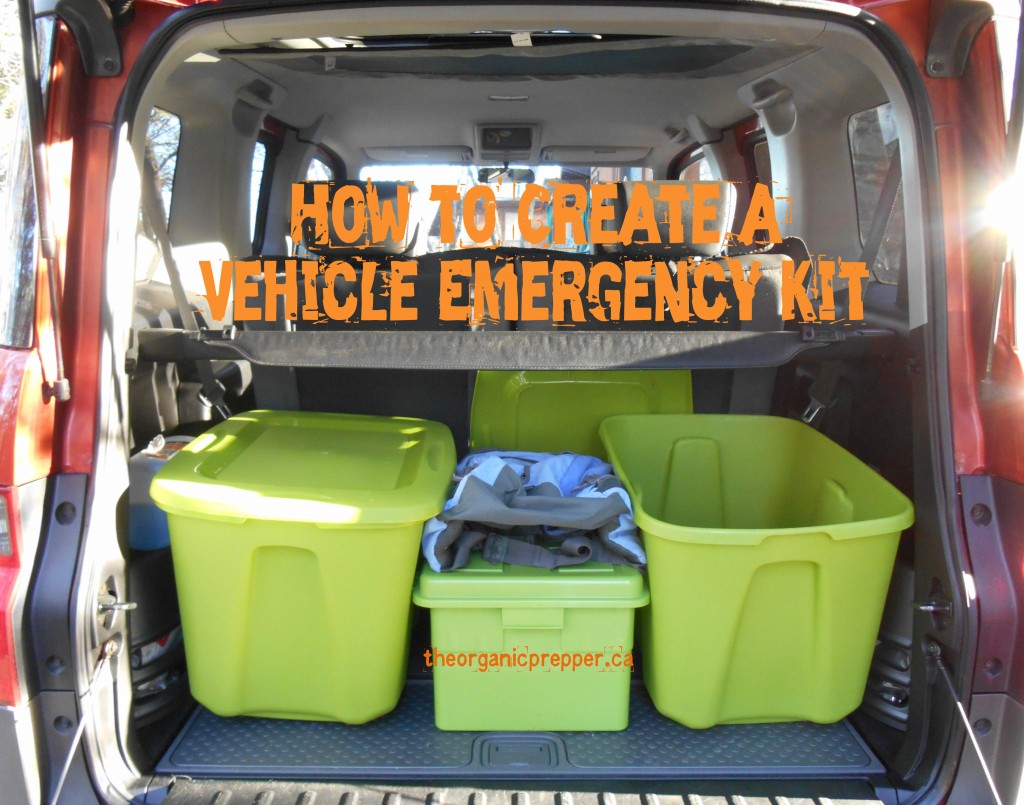
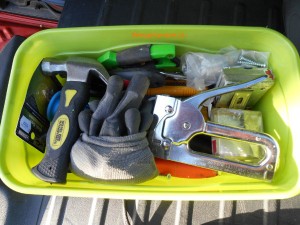
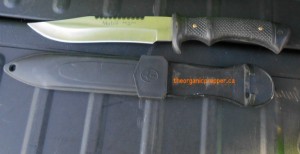
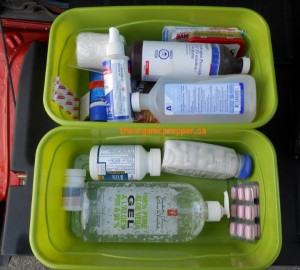
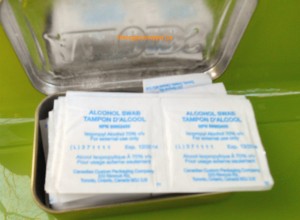
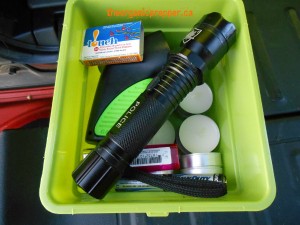
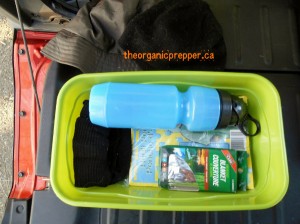
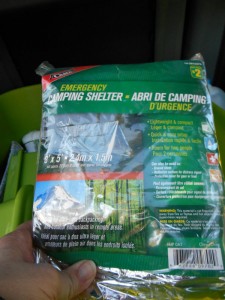
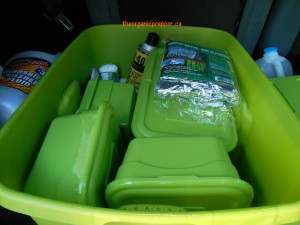
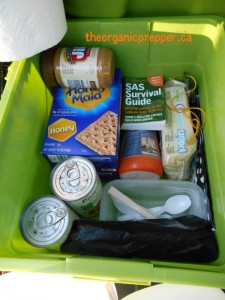
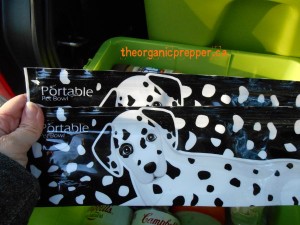
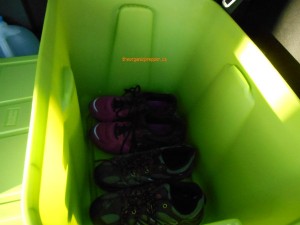














14 Responses
Lots of good ideas here! Thank you Daisy!
I keep a cooler with bottles of water in my car. Whenever I travel outside our local area, I include a gallon size Ziploc bag of ice cubes.
The nice cold water always comes in handy. The cooler has come in handy numerous times when we happen to find a good food buy on a food item.
Hope you have a great day!
KY Mom
Excellent advice. Two items which we value are a QuickClot 50 gram blood clotting sponge and an Israeli Battle Dressing Compression Bandage, 6 Inch ($13 and $8 respectively on Amazon).
We believe strongly in Bug-Out bags. Ours contain many of the items in this article. Since our vehicle is virtually always with us, we keep one of our Bug-Out bags in it, thus also serving as a well-equipped vehicle emergency kit.
Be aware that epipens and other medications-like inhalers are temperature sensitive and also have expiration dates. I have them in my EDC bag-which is a hip pack I wear so I don’t have to think about it-they are always there for my son. When he is old enough to self carry-he gets to worry about it. Although I will still carry a back up set.
J Mac –
Yes, you’re absolutely right with that warning about the medications. The allergy meds that I keep in the vehicle are Benadryl and a corticosteroid. The Epi-pen travels in my personal bag.
Thank you for that important input!
Daisy
Benadryl is bad nasty stuff.
http://www.lewrockwell.com/2010/08/joseph-mercola/how-to-make-your-brain-stop-working/
Helot:
Agreed. And that is a really great article explaining why. 🙂
I feel it is necessary in our kit, though, because my child has a severe food allergy. If she is accidentally exposed, particularly in a situation where there is no access to a hospital, I will absolutely give her an antihistamine to offset her reaction. I think it’s the lesser of two evils. This isn’t something she is given on a regular basis for seasonal allergies. We only use it in the event of an allergic reaction, which can cause anything from hives and itching to swelling of the throat and mucous membranes. The idea of her having a reaction that worsens to the point of anaphylaxis is terrifying to me, so we carry this medication. We also have an epi-pen for a worst case scenario, that thankfully we have never needed, and hopefully never will.
~ Daisy
Maybe someday there will be a better alternative to Benadryl.
I was reading about severe reactions people can have from poison ivy and poison oak. For some people, getting a shot is the only remedy. It would be great if someday there was an alternative to the shot. Someone I know went through all that, and it was not fun for either of us.
I forgot to mention, I like your setup. I tie mine down in the event of a rollover or an accident so stuff doesn’t go flying everywhere.
I recently attached a fire extinguisher to a backpack I have tied down in the back. With a 12 year self-life I hope it’s something I never have to use for all that time. But it’s kind of reassuring having it along for the ride. Benadryl, for you, is the same.
For poison Ivy and Oak try using Zanfel… its a soap that removes the oils of the plant… it’s a cure not a treatment… Try it… The DoD has added it to the Army and Marine Corps for the guys…
Scott @ the core medical depot… Medic of 19 years…
Wow, thanks for sharing! My DOCTOR told me to take Benedryl as a sleep aide! I’ve been doing this for several years! At 58, that’s too close!
Um mercolas a fraudulent quack please dont listen to psuedo science.
That was a drive-by hit job without any substance.
Dr. Mercola makes a heck of a lot of sense. He has some really interesting articles with a lot of information and facts. Unlike the hit job comment above.
The “psuedo science” is what main stream doctors are doing everyday. Just spend a few moments looking over the archives at Jon Rappoport’s website to see what I mean. Or, here. For that matter.
It’s your life, scoff if you want too. Nobody pays, except you, if you’re wrong.
Nice list! I have mine stored in a toolbox attached to my pickup bed! 😀 Takes up a lot less space that I used to in the back seat. Plus, now I can have people ride in the back seat and not worry about what I have to leave behind! 😀
Some random 2021 suggestions:
Signal mirrors are an excellent idea, but newbies need to understand that the military uses signal mirrors with an unsilvered “hole” in the center so that sunlight (as viewed on the mirror’s backside as that sunlight falls on your face) can be used to aim your signal flashes accurately. The old Boy Scout stainless steel double-sided mirrors didn’t come with a center hole, so for signaling purposes a hole needed to be drilled into them. In an emergency an unused CD or DVD blank (with no writing on it) already has a center hole and can make an excellent signal mirror.
You need to carry never-used water filters so if they ever freeze, the tiny capillary tubes won’t have any residual water to turn into ice that will crack them … and make the water filter deadly as it could then pass some water without removing the disease-causing bad stuff. If you’re forced to use a water filter when the temperature is below freezing, you then MUST keep that filter warm enough to prevent freezing OR assume that the freeze has damaged the water-filled capillary tubes — so it must be discarded and replaced with a never-used filter.
Carrying a flip phone could be useful. Its battery lasts a lot longer than a smart phone.
Carrying a solar charger even for the flip phone is not a bad idea.
The recommendation to carry a couple of blankets needs some detail. Some blanket materials are a really bad idea. Wool blankets are very good, eg. If using a sleeping bag, make sure you know what the lowest temperature rating is for it — and write or tape that rating to the bag.
Hand sanitizer on Daisy’s list is typically made with alcohol in a gel substance. It happens to make an outstanding fire-starter in combination with a cotton ball, a cotton cosmetics removal pad, or even a feather stick (once you learn how to cut those shavings from a dry stick of wood).
Coconut oil is also a great multi-function substance. Besides being an excellent edible for cooking oil or a butter substitute that needs no refrigeration, it also makes a useful fire-starter along with cotton balls, etc as discussed above. It can even be a useful gun oil.
A mini-sized ham transceiver radio is not a bad idea either. Even though ordinary communication requires a ham license, emergency transmissions (such as for help) do not! And that might work if there are no nearby cell towers working.
One very common reason for a tire to suddenly go flat is by picking up a nail or screw on the road. It’s easy to learn how to do an emergency patch … but that only works if you’ve included an inexpensive patch kit in your supplies — along with your tire pump, etc.
–Lewis
The only portable water filter I know of that is not vulnerable to freezing temperature damage is the SurvFilter … including its refill units. It’s a bit more pricey than most other water filters but the reassurance that a freeze (even after use) can’t destroy it … sounds like reasonable justification for the higher price.
While the mylar sheets (often labeled as survival blankets, or sometimes made into bivvy bags) can be effective, they carry an extreme danger if not used correctly. If placed directly against human skin during extreme cold, that will cause moisture to accumulate on the skin. In really cold weather … becoming both cold AND wet can be deadly. So there needs to be some effective fabric BETWEEN the mylar and the human skin … such as wool blankets, eg.
When this article was written back in 2014 … the prices of “everything” including gasoline and diesel had not yet skyrocketed. Recent news in 2022 has covered the incentive for fuel thieves to try siphoning. If that doesn’t work (if for example, you have a locking gas cap), drilling a hole in the gas tank is method #2. Since getting that repaired probably involves getting towed plus the mechanic’s bill, you have a strong incentive to be very careful where you park and whether you have a partner to guard your vehicle or where you park has guards on site.
Similarly there are reports of catalytic converters being stolen from vehicles as well. More reasons to refer to the precautions above.
–Lewis